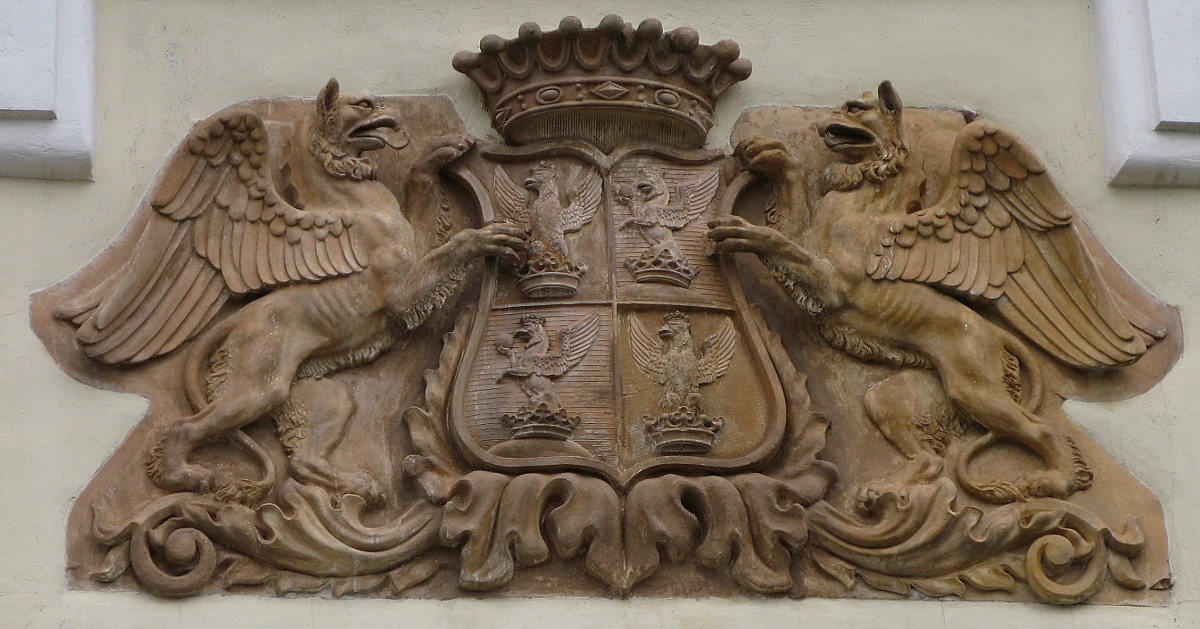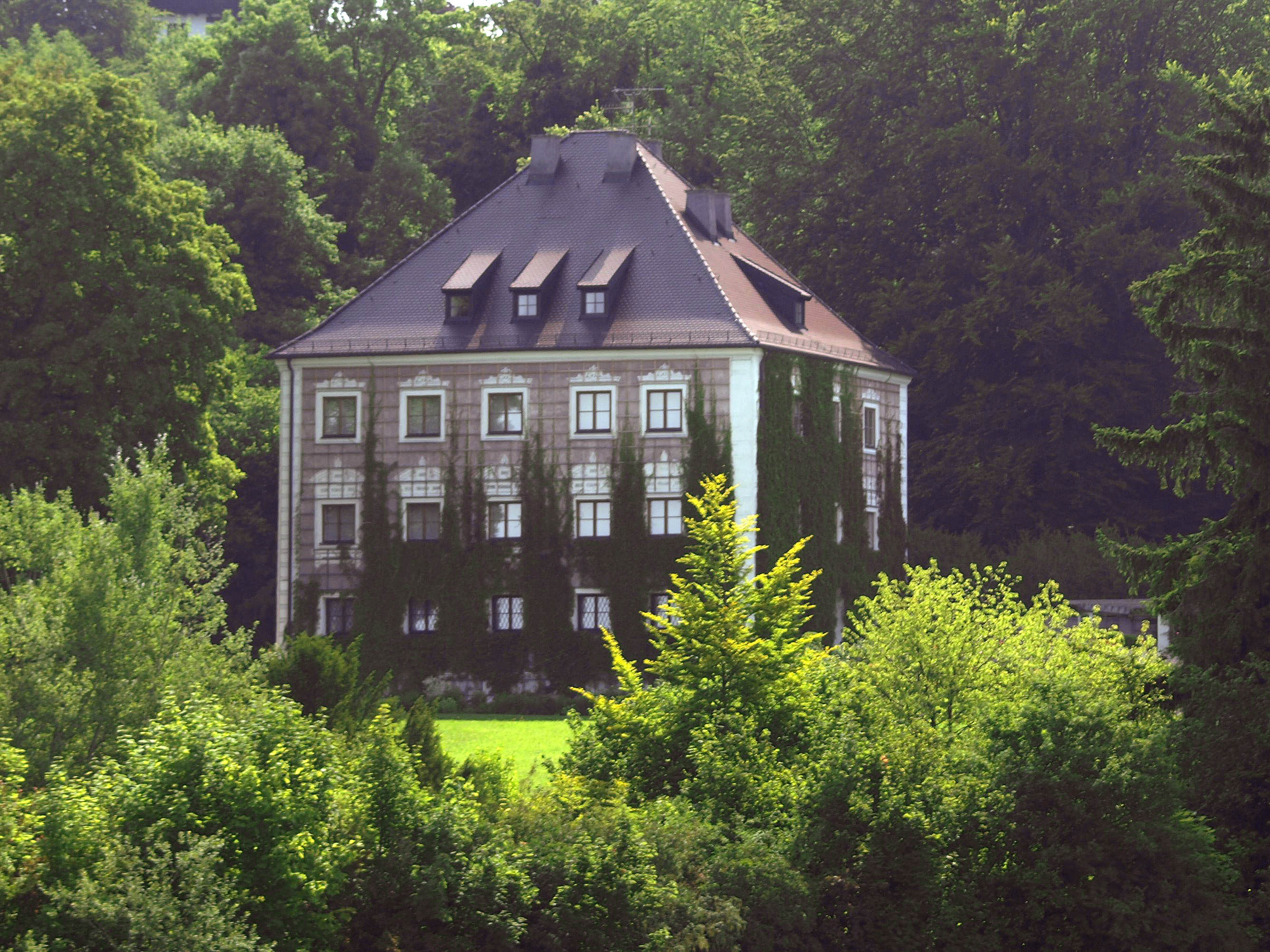|
Franz Von Bayern
Franz Bonaventura Adalbert Maria Herzog von Bayern (born 14 July 1933), commonly known by the courtesy title Duke of Bavaria, is the head of the House of Wittelsbach, the former ruling family of the Kingdom of Bavaria. His great-grandfather King Ludwig III was the last ruling monarch of Bavaria, being deposed in 1918. Franz was born in Munich. During the Second World War, the Wittelsbachs were anti-Nazi. The family initially left Nazi Germany for the Kingdom of Hungary but were eventually arrested following Operation Panzerfaust in 1944. Franz, who was only 11 at the time, spent time in several Nazi concentration camps, including Sachsenhausen, then Flossenbürg and finally Dachau. After the war, Franz was a student at the University of Munich and became a collector of modern art. Franz succeeded as head of the House of Wittelsbach, and as pretender to the Bavarian throne, on the death of his father in 1996. He lives at Nymphenburg Palace in Munich and Berg Palace. ... [...More Info...] [...Related Items...] OR: [Wikipedia] [Google] [Baidu] |
Munich
Munich ( ; german: München ; bar, Minga ) is the capital and most populous city of the States of Germany, German state of Bavaria. With a population of 1,558,395 inhabitants as of 31 July 2020, it is the List of cities in Germany by population, third-largest city in Germany, after Berlin and Hamburg, and thus the largest which does not constitute its own state, as well as the List of cities in the European Union by population within city limits, 11th-largest city in the European Union. The Munich Metropolitan Region, city's metropolitan region is home to 6 million people. Straddling the banks of the River Isar (a tributary of the Danube) north of the Northern Limestone Alps, Bavarian Alps, Munich is the seat of the Bavarian Regierungsbezirk, administrative region of Upper Bavaria, while being the population density, most densely populated municipality in Germany (4,500 people per km2). Munich is the second-largest city in the Bavarian dialects, Bavarian dialect area, ... [...More Info...] [...Related Items...] OR: [Wikipedia] [Google] [Baidu] |
Sachsenhausen Concentration Camp
Sachsenhausen () or Sachsenhausen-Oranienburg was a German Nazi concentration camp in Oranienburg, Germany, used from 1936 until April 1945, shortly before the defeat of Nazi Germany in May later that year. It mainly held political prisoners throughout World War II. Prominent prisoners included Joseph Stalin's oldest son, Yakov Dzhugashvili; assassin Herschel Grynszpan; Paul Reynaud, the penultimate Prime Minister of France; Francisco Largo Caballero, Prime Minister of the Second Spanish Republic during the Spanish Civil War; the wife and children of the Crown Prince of Bavaria; Ukrainian nationalist leader Stepan Bandera; and several enemy soldiers and political dissidents. Sachsenhausen was a labor camp, outfitted with several subcamps, a gas chamber, and a medical experimentation area. Prisoners were treated inhumanely, fed inadequately, and killed openly. After World War II, when Oranienburg was in the Soviet Occupation Zone, the structure was used by the NKVD as NKVD ... [...More Info...] [...Related Items...] OR: [Wikipedia] [Google] [Baidu] |
Morganatic Marriage
Morganatic marriage, sometimes called a left-handed marriage, is a marriage between people of unequal social rank, which in the context of royalty or other inherited title prevents the principal's position or privileges being passed to the spouse, or any children born of the marriage. The concept is most prevalent in German-speaking territories and countries most influenced by the customs of the German-speaking realms. Generally, this is a marriage between a man of high birth (such as from a reigning, deposed or mediatised dynasty) and a woman of lesser status (such as a daughter of a low-ranked noble family or a commoner).Webster's Online Dictionary . Retrieved 2008-07-10. Diesbach, Ghislain de. ''S ... [...More Info...] [...Related Items...] OR: [Wikipedia] [Google] [Baidu] |
Mediatised Houses
The mediatised houses (or mediatized houses, german: Standesherren) were ruling princely and comital-ranked houses that were mediatised in the Holy Roman Empire during the period 1803–1815 as part of German mediatisation, and were later recognised in 1825–1829 by the German ruling houses as possessing considerable rights and rank. With few exceptions, these houses were those whose heads held a seat in the Imperial Diet when mediatised during the establishment of the Confederation of the Rhine in 1806–07, by France in 1810, or by the Congress of Vienna in 1814–15. The mediatised houses were organised into two ranks: the princely houses, entitled to the predicate ''Durchlaucht'' (Serene Highness), which previously possessed a vote on the Bench of Princes (''Furstenbank''); and the comital houses that were accorded the address of ''Erlaucht'' (Illustrious Highness), which previously possessed a vote in one of the four Benches of Counts (''Gräfenbank''). Although some form of ... [...More Info...] [...Related Items...] OR: [Wikipedia] [Google] [Baidu] |
Sovereign
''Sovereign'' is a title which can be applied to the highest leader in various categories. The word is borrowed from Old French , which is ultimately derived from the Latin , meaning 'above'. The roles of a sovereign vary from monarch, ruler or head of state to head of municipal government or head of a chivalric order. As a result, the word ''sovereignty'' has more recently also come to mean independence or autonomy. Head of state The word ''sovereign'' is frequently used synonymously with monarch. There are numerous titles in a monarchical rule which can belong to the sovereign. The sovereign is the autonomous head of the state. Examples of the various titles in modern sovereign leaders are: Chivalric orders The term ''sovereign'' is generally used in place of "grand master" for the supreme head of various orders of European nations. In the Sovereign Military Order of Malta, the Grand Master is styled "Sovereign", e.g. Sovereign Grand Master, due to its status as an intern ... [...More Info...] [...Related Items...] OR: [Wikipedia] [Google] [Baidu] |
Croatian Nobility
Croatian nobility ( hr, plemstvo, lit=vlastelin; french: la noblesse) was a privileged social class in Croatia during the Antiquity and Medieval periods of the country's history. Noble families in the Kingdom of Croatia included high ranking populates from Slavonia, Dalmatia, Istria, and Republic of Ragusa. Members belonged to an elite social hierarchy, normally placed immediately behind blood royalty, that possessed considerably more privileges or eminence than most other classes in a society. Membership thereof typically was often hereditary. Historically, membership in the nobility and the prerogatives thereof have been regulated or acknowledged by the monarch. Acquisition of sufficient power, wealth, military prowess or royal favour enabled commoners to ascend into the nobility. The country's royalty was heavily influenced by France's nobility resulting members of the Royal Courts to assume French titles and practices during French occupation. The controversial assumption ... [...More Info...] [...Related Items...] OR: [Wikipedia] [Google] [Baidu] |
House Of Drašković
A house is a single-unit residential building. It may range in complexity from a rudimentary hut to a complex structure of wood, masonry, concrete or other material, outfitted with plumbing, electrical, and heating, ventilation, and air conditioning systems.Schoenauer, Norbert (2000). ''6,000 Years of Housing'' (rev. ed.) (New York: W.W. Norton & Company). Houses use a range of different roofing systems to keep precipitation such as rain from getting into the dwelling space. Houses may have doors or locks to secure the dwelling space and protect its inhabitants and contents from burglars or other trespassers. Most conventional modern houses in Western cultures will contain one or more bedrooms and bathrooms, a kitchen or cooking area, and a living room. A house may have a separate dining room, or the eating area may be integrated into another room. Some large houses in North America have a recreation room. In traditional agriculture-oriented societies, domestic animals such as ... [...More Info...] [...Related Items...] OR: [Wikipedia] [Google] [Baidu] |
Berg Palace (Bavaria)
Berg Palace (german: Schloss Berg) is a manor house situated on the east bank of Lake Starnberg in the village of Berg in Upper Bavaria, Germany. The site became widely known as the last residence of King Ludwig II of Bavaria and location of his disputed death. Today, it serves as residence of Franz, Duke of Bavaria, head of the house of Wittelsbach. History Ferdinand Maria, Elector of Bavaria, acquired a piece of land on the banks of Lake Starnberg in 1676 from the Horwarth family and ordered the construction of Berg Palace. Ferdinand used it for festivities, but it reached its zenith under his successors, elector Max Emanuel and Emperor Charles VII, when it served as the ambiance for spectacular entertainment and hunting events. Between 1849 and 1851 King Maximilian II instructed the architect Eduard Riedel to redesign the site in Neo-Gothic style, with added crenellations and four towers, for which the king bought additional land. Maximilian's son Ludwig II of Bavar ... [...More Info...] [...Related Items...] OR: [Wikipedia] [Google] [Baidu] |
Nymphenburg Palace
The Nymphenburg Palace (german: Schloss Nymphenburg, Palace of the Nymphs) is a Baroque palace situated in Munich's western district Neuhausen-Nymphenburg, in Bavaria, southern Germany. Combined with the adjacent Nymphenburg Palace Park it constitutes one of the premier royal palaces of Europe. Its frontal width of (north–south axis) even surpasses Versailles Palace. The Nymphenburg served as the main summer residence for the former rulers of Bavaria of the House of Wittelsbach. History Building history The palace was commissioned by the electoral couple Ferdinand Maria and Henriette Adelaide of Savoy to the designs of the Italian architect Agostino Barelli in 1664 after the birth of their son Maximilian II Emanuel. The central pavilion was completed in 1675. As a building material, it utilised limestone from Kelheim. The palace was gradually expanded and transformed over the years. It then quickly replaced the nearby Blutenburg Castle as major hunting lodge of the court and ... [...More Info...] [...Related Items...] OR: [Wikipedia] [Google] [Baidu] |
Pretender
A pretender is someone who claims to be the rightful ruler of a country although not recognized as such by the current government. The term is often used to suggest that a claim is not legitimate.Curley Jr., Walter J. P. ''Monarchs-in-Waiting''. New York, 1973, pp. 4, 10. . The word may refer to a former monarch or a descendant of a deposed monarchy, although this type of claimant is also referred to as a head of a house. The word was popularized by Queen Anne, who used it to refer to her Roman Catholic half-brother James Francis Edward Stuart, the Jacobite heir, in an address to Parliament in 1708: "The French fleet sailed from Dunkirk ... with the Pretender on board." In 1807 the French Emperor Napoleon complained that the ''Almanach de Gotha'' continued to list German princes whom he had deposed. This episode established that publication as the pre-eminent authority on the titles of deposed monarchs and nobility, many of which were restored in 1815 after the end of Napole ... [...More Info...] [...Related Items...] OR: [Wikipedia] [Google] [Baidu] |
Modern Art
Modern art includes artistic work produced during the period extending roughly from the 1860s to the 1970s, and denotes the styles and philosophies of the art produced during that era. The term is usually associated with art in which the traditions of the past have been thrown aside in a spirit of experimentation. Modern artists experimented with new ways of seeing and with fresh ideas about the nature of materials and functions of art. A tendency away from the narrative, which was characteristic for the traditional arts, toward abstraction is characteristic of much modern art. More recent artistic production is often called contemporary art or postmodern art. Modern art begins with the heritage of painters like Vincent van Gogh, Paul Cézanne, Paul Gauguin, Georges Seurat and Henri de Toulouse-Lautrec all of whom were essential for the development of modern art. At the beginning of the 20th century Henri Matisse and several other young artists including the Proto-Cubism, pre-c ... [...More Info...] [...Related Items...] OR: [Wikipedia] [Google] [Baidu] |


_(cropped)_(3-to-4_aspect_ratio).jpg)



_020.jpg)

